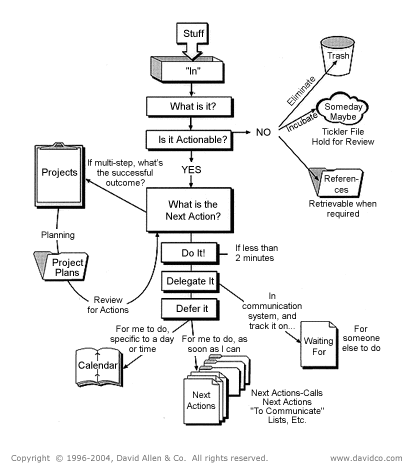Orgflow: Theory
Many people’s interest in organizational systems is directly proportional to how over-committed they are in the moment. Which means November and December is when I get the most amount of people asking about my orgmode system. This post overviews the system.
For those that do not want to read my old post on this, the quick summary is this:
This system is not about ‘productivity hacks’, it’s about slowly making lifestyle changes over a long period of time that will have positive and profoundly helpful effects on (mental) health.
I started thinking about these issues seriously back in 2018 and see the system I work with now and a part of a very linear evolution of a commitment to trying to make my work life less stressful. Many of the general principles are the same as then.
The most noticeable difference is that there is now much less friction between coming across “stuff” and ensuring that whatever “stuff” that crosses my desk ends up in state that is held in my awareness in relative proportion to its importance in my life and that I don’t think about it much after it’s in the system.
This has mostly been accomplished by moving over from just using a plain, color coded, indented, hierarchical text file that are manipulated with vim (see old screenshot from 2018 post) to now using a plain, indented, hierarchical series of text files that manipulated with emacs orgmode.
This is what it used to look like:

This is what the system looks like as of late 2023.

So what are we looking at in this screenshot above?
Overview
At its highest level, this is just GTD implemented in orgmode.
That’s it. Whatever I describe here will be only be a bastardization of David Allen’s work, so if you really want to go deep on this, buy his book.
The main idea is that you have a trusted system (in my case, a series of text files) that stores and organises everything that bounces around in your head. “Stuff” goes in; A systematic, prioritized, digital, list of actionable items comes out.

The reason this works well is because my brain is just not nimble enough to deal with the insane amount of things I want to do. And to be clear, I like to do a lot. If I had a lot less to do, I might not need a system like I do today. I probably still would use it, if only to be liberated from the rumination and thoughts of unfinished work that used to torture me at night.
But the way I want to live my life right now, with it’s constantly changing priorities, deadlines, locations, contexts, oscillating interests, I really need this. In addition to doing all this stuff, I also want to not have an existential crisis every time I sit down to do work and have to decide what I should be working on.
In addition to this elaborate system of tracking the commitments I have made to myself and other people, the system also requires having a pretty strict way of funneling “stuff” into the system. I know when I check specific messages, I know what I do during this process, but I also have ways to capture “stuff” on the fly, as not to get bogged down in the mess of it all during the day to day. It does take a fair amount of energy invested at the front end of it all, with a regular commitment to reviewing, but it’s worth it.